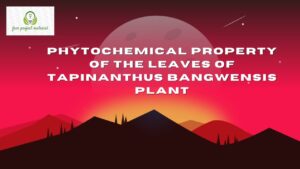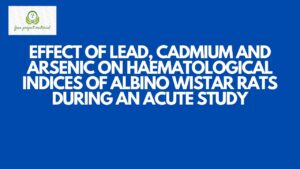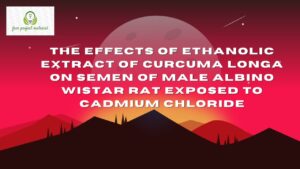ABSTRACT
Extracts and powders produced from the leaves of two indigenous vegetables – ‘atama’ (Heinsia crinata) and ‘uchakoro’ (Vitex doniana) were evaluated. Four groups of processes were applied on the vegetables to obtain the samples: blanching, oven drying and milling; oven drying and milling; steam blanching, wet-milling, filtration, and fermentation; fermentation, wet-milling and filtration. After, a preliminary study to evaluate the antinutritional factors at different intervals of blanching and fermentation was carried out, five samples, fresh dried leaf powder (FDPL), blanched (8 mins) dried sample at 500c, fermented (5 days) leaf extract, blanched leaf (10mins)/fermented (5days) extract and blanched (10mins) leaf extract were selected for further studies, fresh leaves (FL) served as control. These were evaluated for proximate composition, mineral, and vitamin contents. Two samples each (fresh dried and blanched extracts) were selected for rat bioassay based on their iron content. Body weights were taken and blood samples collected from the animals on days 0, 14, 18, 21 and 24. Internal organs were weighed at the end of the experiment. The antinutritional studies revealed that blanching, fermentation, and drying reduced alkaloid, phytate, tannin, and oxalate contents of the processed leaf and leaf extracts to a safe level. The proximate analysis showed that the crude protein content of all the samples ranged from 0.02±0.00-17.29±0.01%; crude fibre of the powders ranged from 1.68±0.03-10.15%, ash contents varied from 0.26±0.01-6.55±0.01%, while total carbohydrate varied from 3.61±0.06-65.55±0.33%. The contents of sodium, calcium, and iron in the samples varied from 0.24±0.01-1.29±0.03mg/100g, 11.69±0.01-63.00±0.22,mg/100g and 3.00±0.00-31.26±0.01mg/100g respectively. The vitamin analysis showed that vitamin C ranged from 1.52±0.37-32.98±0.78mg/100g, vitamin E (0.12±0.00-53.31±0.02mg/100g), vitamin B2, (0.01±0.00-9.13±0.00mg/100g) and vitamin A (55.50±0.64-3583.26±4.68µ/mg). The bioassay results showed that all the samples caused a significant increase (p<0.05) in red blood cell (6.42-7.15 106/µl) and hemoglobin concentration (10.96-15.04 g/dl) in relation to the anemic controls. Body weight evaluation showed that there was significant increase (p<0.05) in weights of all the rat groups fed with the samples at different doses (153.70-177.45g). Relative organ weights of the test rats were observed to show significant differences (p<0.05) among samples for mean liver and kidney weights; and no significant differences (p>0.05) for mean heart and spleen weights respectively. Most of the liver and kidney function tests revealed that the samples did not cause any deleterious effect on the organs. This study has successfully demonstrated that ‘atama’ and ‘uchakoro’ leaves and their extracts have potentials for alleviating anaemia.
TABLE OF CONTENTS
Title Page – – – – – – – – – i
Dedication – – – – – – – – – ii
Acknowledgement – – – – – – – – – iii
Certification – – – – – – – – – iv
Table of Contents – – – – – – – – – v
List of Tables – – – – – – – – – ix
List of Figures – – – – – – – – – xi
Abstract – – – – – – – – – xii
CHAPTER ONE: INTRODUCTION – – – – – – 1
CHAPTER TWO: LITERATURE REVIEW – – – – – 3
2.1 Difference between functional food, nutraceutical and phytochemical – 3
2.2 Challenges facing nutraceutcial – – – – – – 3
2.3 Processing of nutraceutical – – – – – – – 4
2.4 Vegetables and their uses – – – – – – – 4
2.5 Nutritional composition of green leafy vegetables – – – – 5
2.5.1 Moisture content – – – – – – – – 5
2.5.2 Energy content – – – – – – – – 5
2.5.3 Protein – – – – – – – – – 5
2.5.4 Ether extracts (fats) – – – – – – – – 5
2.5.5 Mineral component – – – – – – – – 6
2.5.6 Vitamin content – – – – – – – – 6
2.6 Anti-nutrient content – – – – – – – – 6
2.7 Plant as source of food and supply – – – – – – 6
2.8 The ‘uchakoro’ leave – – – – – – – – 8
2.9 The ‘atama’ leave – – – – – – – – 9
2.10 Labelling issues regarding nutraceutical – – – – – 9
2.11 The phytochemical constituents of vegetables – – – – 10
2.12 Anaemia – – – – – – – – – 11
2.13 Bioassay – – – – – – – – – 12
CHAPTER THREE: MATERIALS AND METHODS – – – – 13
3.1 Materials – – – – – – – – – 13
3.2 Methods – – – – – – – – – 13
3.3 Proximate analysis of the samples – – – – – – 15
3.4 Determination of selected vitamins – – – – – – 16
3.5 Determination of selected mineral elements – – – – – 18
3.6 Determination of antinutrients and toxicants – – – – – 19
3.7 Rat bioassay – – – – – – – – – 21
3.7.1 Animal and housing – – – – – – – – 23
3.7.2 Feeding and analysis – – – – – – – – 24
3.8 Haematological and Clinical tests – – – – – – 24
3.9 Determination of mean corpuscular volume – – – – – 28
3.10 Determination of organ weight percentages – – – – – 28
3.11 Statistical analysis – – – – – – – – 28
CHAPTER FOUR: RESULTS AND DISCUSSION – – – – 29
4.1 Antinutrient and toxicant composition of the samples – – – 29
4.2 Proximate composition – – – – – – – 40
4.3 Mineral composition – – – – – – – – 45
4.4 Vitamin composition – – – – – – – – 47
4.5 Effect of leaf/leaf extracts intake on the red blood cell counts – – 50
4.6 Effect of leaf/leaf extracts intake on the haemoglobin concentration – – 52
4.7 Effect of leaf/leaf extracts intake on packed cell volume – – – 54
4.8 Effect of leaf/leaf extracts intake on the mean corpuscular volume of anemic rats
and their controls – – – – – – – – 56
4.9 Effect of leaf/leaf extracts intake on the body weight (g) of rats – – 58
4.10 Effect of leaf/leaf extracts intake on the total leukocyte counts of rats – 60
4.11 Effect of leaf/leaf extracts intake on the liver function – serum alanine amino tranferase phosphatase test of rats – – – – – – 62
4.12 Effect of leaf/leaf extracts intake on the kidney function – blood urea nitrogen,
total protein and creatinine test of experimental rats – – – – 65
4.13 Effect of leaf/leaf extracts intake on the percentage relative organ weights of rats- 70
CHAPTER FIVE: CONCLUSIONS AND RECOMMENDATIONS – – 72
5.1 Conclusions – – – – – – – – – 72
5.2 Recommendations – – – – – – – –
REFERENCES – – – – – – – – – 73
APPENDIX
LIST OF TABLES
Table 1: Effect of blanching and fermentation duration on
antinutrients composition of ‘atama’ (Heinisa crinata) leaf extract- 31
Table 2: Effect of blanching and fermentation duration on
antinutrients composition of ‘uchakoro’ (Vitex doniana) leaf extract- 32
Table 3: Effect of blanching and drying on antinutrients composition of
atama’ (Heinisa crinata) leaf – – – – – – 35
Table 4: Effect of blanching and drying on antinutrients composition of
‘uchakoro’ (Vitex doniana) leaf – – – – – 36
Table 5: Effect of fermentation on antinutrients composition of ‘Atama’ (Heinisa crinata) leaf – – 38
Table 6: Effect of fermentation on antinutrients composition of ‘uchakoro’ (Vitex doniana) leaf- – 39
Table 7: Proximate composition of ‘atama’ leaf and leaf extract – – 43
Table 8: Proximate composition of ‘uchakoro’ leaf and leaf extract – – 44
Table 9: Mineral composition of’ atama’ leaf and leaf extract – – – 46
Table 10: Mineral composition of ‘uchakoro’ leaf and leaf extract – – 46
Table 11: Vitamin composition of ‘atama’ leaf and leaf extract – – 49
Table 12: Vitamin composition of ‘uchakoro’ leaf and leaf extract- – – 49
Table 13: Red blood cell (106/µl) counts of the rats – – – – 51
Table 14: Haemoglobin concentration (g/dl) of the rats – – – 53
Table 15: Packed cell volume (%) of the rats – – – – – 55
Table 16: Mean corpuscular volume (%) of the rats – – – – 57
Table 17: Body weights (g) of the rats – – – – – – 59
Table 18: Total leukocyte counts (103/µl) of the rats – – – – 61
Table 19: Serum alanine amino transferases (IU/L) of the rats- – – – 63
Table 20: Alkaline phosphatase (IU/L) of the rats- – – – – 64
Table 21: Blood urea nitrogen of the rats – – – – – 67
Table 22: Total protein of the rats- – – – – – – 68
Table 23: Creatinine of the rats – – – – – – – 69
Table 24: Relative organ weight (%) of the rats – – – – 71
LIST OF FIGURES
Figure 1: Flowcharts for the production of vegetables extracts and powders
CHAPTER ONE
1.0 INTRODUCTION
Nutraceutical can be defined as “a food (or part of food) that provides medical or health benefits, including the prevention and / or treatment of a disease (Defelice, 1989).
The term “nutraceutical” was coined from “nutrition” and “pharmaceutical” in 1989 by Stephen Defelice, MD, Founder and Chairman of the Foundation for Innovation in Medicine (FIM) Cranford, New Jersey. There are many ways to think about food. In the simplest sense, food is organic fuel, that is, it provides the energy needed to perform daily functions and maintain normal metabolic processes. Food contains nutrients that are essential to prevent diseases, for example, scurvy will not occur if vitamin C is continually present in the human diet. Similarly, blindness can occur where diets are deficient in vitamin A. The essential nutrients that the body needs to prevent specific disease have been a major focus of human nutrition research for the past century (Beecher, 1999).
What is interesting, however, is that the link between diet and disease, or more important, diet and health, cannot be entirely explained by the absence or presence of the various essential nutrients in our diets. Today, multitudes of components that are found in foods are being studied to determine the role they play in maintaining health and reducing the risk of disease. “Nutraceuticals” and “Functional Foods” are two new terms used to describe health promoting foods or their extracted components (Ames et al., 1993). The beneficial role of many nutraceuticals and functional foods may relate to their protective effects against degenerative diseases, such as cancer and cardiovascular diseases. The interest in nutraceuticals and functional foods continues to grow powered by diverse research efforts to identify properties and potential application of nutraceutical substances, with the public interest and consumer demand (Brower, 1998).The use of nutraceuticals as an attempt to accomplish desirable therapeutic outcomes with reduced side effects as compared to drug -based therapeutic agents, has met with great success (Nelson, 1999; Whiteman, 2001). However, nutraceuticals still need support of an extensive scientific study to prove their effects with reduced side effects (Heyland, 2001)
Examples of claims made from nutraceutical are resveratrol from red grape products as an antioxidant and an anticholesterolemic broccoli (Sulforaphane) as a cancer preventive agent and many others. Several nutraceuticals are known, some examples are flavonoids, antioxidants such as gamma-linolenic acid, beta-carotene, anthoxyanins. Others include tocopherols and poly-phenolics which are extremely effective antioxidants. These antioxidants are found in various levels in fruits, vegetables and non-food plants. (Hasler, 1998; Dixon and Steele, 1999).Most of the nutraceutical products in Nigeria market are made by Tianshi, Tasly, GNLD, Noni, Green World, Natural Pharmacy, among others, are imported and hence very expensive and out of reach of an average Nigerian. The main raw materials for the production of these products are from natural ingredients (Bull et al., 2001).There is a need for extensive research to explore the nutraceutical potentials of our locally available plant resources. Heinsia crinata (atama) and Vitex doniana (uchakoro) are two leafy vegetables eaten and grown abundantly in Nigeria. This will help to provide vital data for food processors and nutrition workers as well as the consumers for selection of these green leaf vegetables.
1.1 Problems Statement
These vegetables are perishable and are mostly used locally for preparing dishes like soup, porridge and many others. There is need to improve identify the nutraceutical potentials of these leaves.
1.2 Objectives of the Study
- The general research objective is aimed at the evaluation of nutraceutical potentials of ‘Uchakoro’ (Vitex doniana) and ‘Atama’ (Heinsia crinata) leaves.
Specific Objectives
- To produce nutracetuical base from raw and processed ‘Uchakoro’ (Vitex doniana) and ‘Atama’ (Heinsia crinata) leaves and their extracts.
- To evaluate the effect of various processing methods on the antinutritional factors of the leaves and their extracts
- To determine the effect of processing on the nutritional contents of the samples.
To determine the effects of the products on the red blood cell and other selected physiological body changes through rat bioassay.



